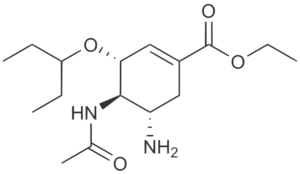Introduction to Abnormal Molar Masses
In order to understand the the abnormal Molar Masses, firstly, we need to understand the total number of remaining particles after dissociation or association of molecules’ solute present in solvent or in the solution. To understand and study more about these abnormalities, the renowned chemist Van’t Hoff had discovered the ‘i’ factor, which is called Van’t Hoff’s factor.
The Van’t Hoff factor is the representation of association or the dissociation of the solute. This factor is solely responsible for whole of the abnormalities present in molar mass. So, firstly we will be studying about the dissociation plus the association of solute particles.
Abnormal Molar Mass
The molecular mass of solute can be determined easily by taking the help of colligative properties which includes depression in freezing point, elevation in boiling point, the relative lowering in vapor pressure, and the osmotic pressure. Indicating an exception, we have derived the relation between the colligative properties and the molecular masses of the solute under a few assumptions:
- The solution is in diluted form, i.e. the solvent which is available in large quantities solvent so as to follow the Raoult’s law.
- No dissolving or association of solute is there in the solution
So, how the determination of solute’s molecular mass can be done under the above assumptions when are not valid? Fundamentally, the abnormality is because of:
- Solute Particles’ Dissociation
- Solute Particles’ Association
Solute Particles’ Association
A few of the molecules of the solute begin to associate within the solution. By this, we mean that now the number of solute particles present in solution are lesser.
As molecular mass and colligative properties of solute are inversely proportional, we thus achieve the higher solute’s molar mass. Let’s say, (CH3COOH) i.e. acetic acid or ethanoic acid in a solution, associate to form dimer because of hydrogen bonding.
Some fixed solutes in the solution are observed as associate. This ultimately results in the decrement in molecular particles’ number in solutions. Therefore, it leads to the decrement in colligative properties’ values.
The Colligative property is inversely proportional to the molecular mass of the solute. As a result, the higher value is achieved for the molecular masses in comparison to the normal values in considering of unassociated molecules.
Solute Particles’ Dissociation
A few of the solute molecules, usually electrolytes, dissociate in 2 or more than 2 particles or ions when they are dissolved in the solution. This results in an increase in solute particles in a solution, by that, there’s a rise in solutions’ colligative properties. As molecular mass plus the colligative properties of solute differs inversely, thus, we acquire the reduced solute’s molar mass.
